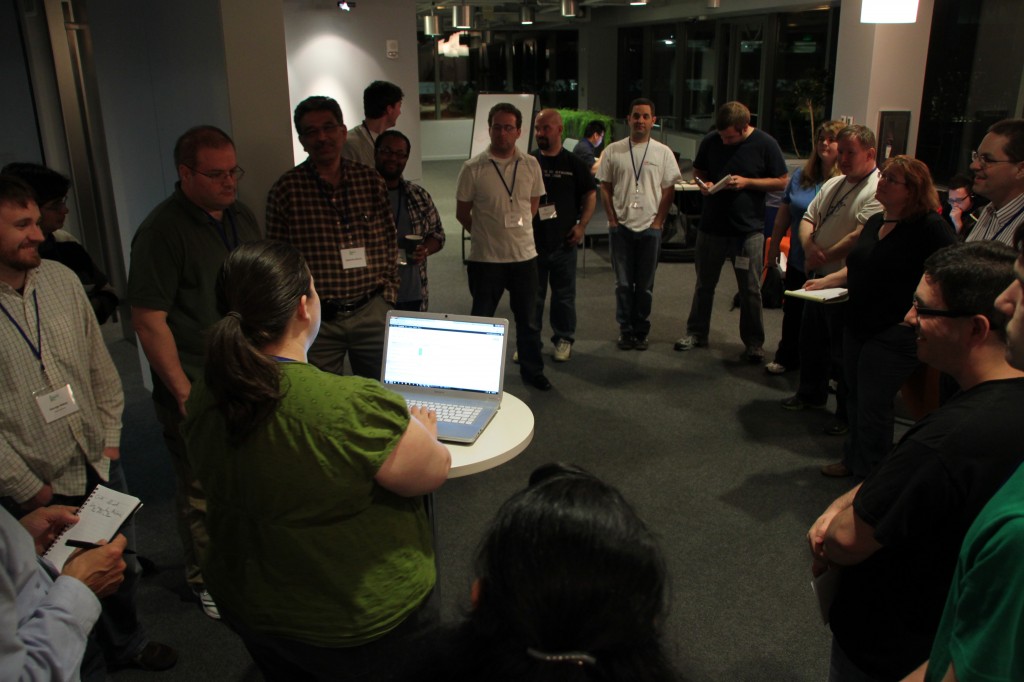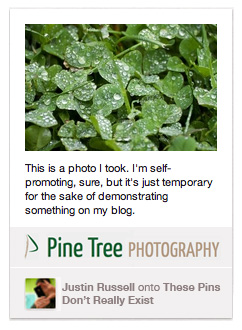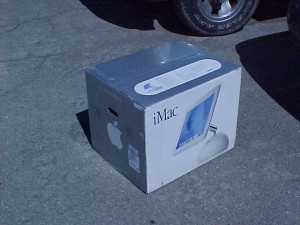I think it’s probably pretty clear by now that I have a little Maine bias. I love this state, and I love watching it grow and improve. But I’m also a realist; I know that not everything that happens in Maine is perfect. Unfortunately, yesterday’s Gentlemen of the Road stopover in Portland featuring Mumford & Sons was one of those less-than-perfect events.
If you find an attendee and ask what he thought of the show, you’ll likely hear that he either loved the show or was really fed up with the event. I’ve heard them both.
I think the disconnect there depends mostly on what the person you ask did at the festival. If she found a place on the lawn, didn’t move for a few hours, and enjoyed the music, there’s a good chance she had a wonderful time. If she had to get up for any reason – to fill a water bottle, to buy some food, to use the bathroom – the story will probably be a little less rosy. That’s the takeaway from the festival: the music was incredibly good, and everything else could use some improvement.
People, people, people
 The biggest problem of the day was that there were too many people for the venue; it was physically difficult to move from one side of the Eastern Promenade to the other. Since this was the first show of its kind on the Prom, this may have simply been a misjudgment of capacity.
The biggest problem of the day was that there were too many people for the venue; it was physically difficult to move from one side of the Eastern Promenade to the other. Since this was the first show of its kind on the Prom, this may have simply been a misjudgment of capacity.
With the people came secondary issues, most notably of which were lines: lines to enter the beer area, lines for food, lines for water. One line stretched the length of the venue. Some friends and I were sitting near the end of the line, and this kind of conversation among people wasn’t uncommon:
“Is this the line for beer?”
“No, it’s the line for water.”
“I thought it was the line for pizza.”
Nobody knew.
Those determined enough to enter the line ultimately waited two hours or more to grab a bite to eat or to refill their water. On an 80-degree day in direct sun, that’s not only inconvenient; it’s dangerous.
Even the toilets were inadequate: within a couple hours into the nine-hour event, some of the portable toilets started to overflow.
Poor entry management was rampant, too, with a lot of confusion about what was and wasn’t allowed in the venue. Some people with children in strollers were turned away, for example, despite numerous strollers allowed into the festival grounds.
Finding solutions
Over the last decade I’ve helped plan a number of events to various degrees. Sure, none of them have been on the same scale as the stopover, but I’ve learned it’s difficult to make all the pieces work well in a large-scale event. It’s important to learn from what went wrong in order to make future events better.
First, the Prom can’t handle as many people as it held yesterday. It’s tough to tell organizers of an event to sell fewer tickets, but at a point capacity becomes a quality and safety concern. Fewer people would mean shorter lines, easier movement, and a better overall experience.
There also needs to be more organization throughout the festival. The festival’s attendee information encouraged attendees to bring a blanket, but this took up additional space and crowded the venue even more. If blankets are allowed in the future, there should be a designated lawn area back from the stage where blankets are allowed – and only standing (or blanket-free sitting) directly in front of the stages. There should also be people to help direct attendees into appropriate lines, and there should be more direction as to where lines should form and where general movement between sections of the venue should occur. Two hours to wait in line for food or water is unacceptable.
Perhaps most importantly, there need to be enough vendors and facilities to accomodate the crowd. There should have been more food, more water stations, and more toilets.
Finally, there should be a clear outline of what is and is not allowed in the festival. No one should receive special treatment.
The importance of a good show
The issues at the Gentlemen of the Road stopover show how difficult it is to run a large-scale festival. A half-dozen bands don’t just come together to play for an afternoon; there need to be near-flawless logistics to create a great experience for everyone.
But why is the experience important? Isn’t the music the main attraction?
A poorly-run show reflects poorly on the bands, and they deserve nothing less than the best. Every band at the show was incredible. The music sounded wonderful throughout the venue, and everyone genuinely seemed to enjoy the entertainment. It’s a shame that the rest of the experience tarnished the day for a number of people at the show.
It’s not just about Mumford & Sons, though. It’s about Maine. With events like Gentlemen of the Road, we have the opportunity to bring people to our state – many for the first time. We need to make the best impression we can to bring them back again and again.
If this were a person’s first event in Maine, they may walk away thinking that Maine can’t handle large shows. That’s simply not the case. We welcome a hundred thousand people every year to the Maine Lobster Festival and to the American Folk Festival, compared to the 15,000 at Gentlemen of the Road. We can do concerts, too; we’ve had a number of near-stopover-sized Waterfront Concerts shows in Bangor, and I very rarely hear complaints from attendees. They’re masterfully done.
We can do great shows and great events in Maine, and I hope Portland continues to hold shows on the Eastern Prom. It’s a beautiful venue, and done right, it could be the home for amazing events. But if the shows continue on the Prom, there need to be major changes to leave the best impression possible on those who choose to join us here.



